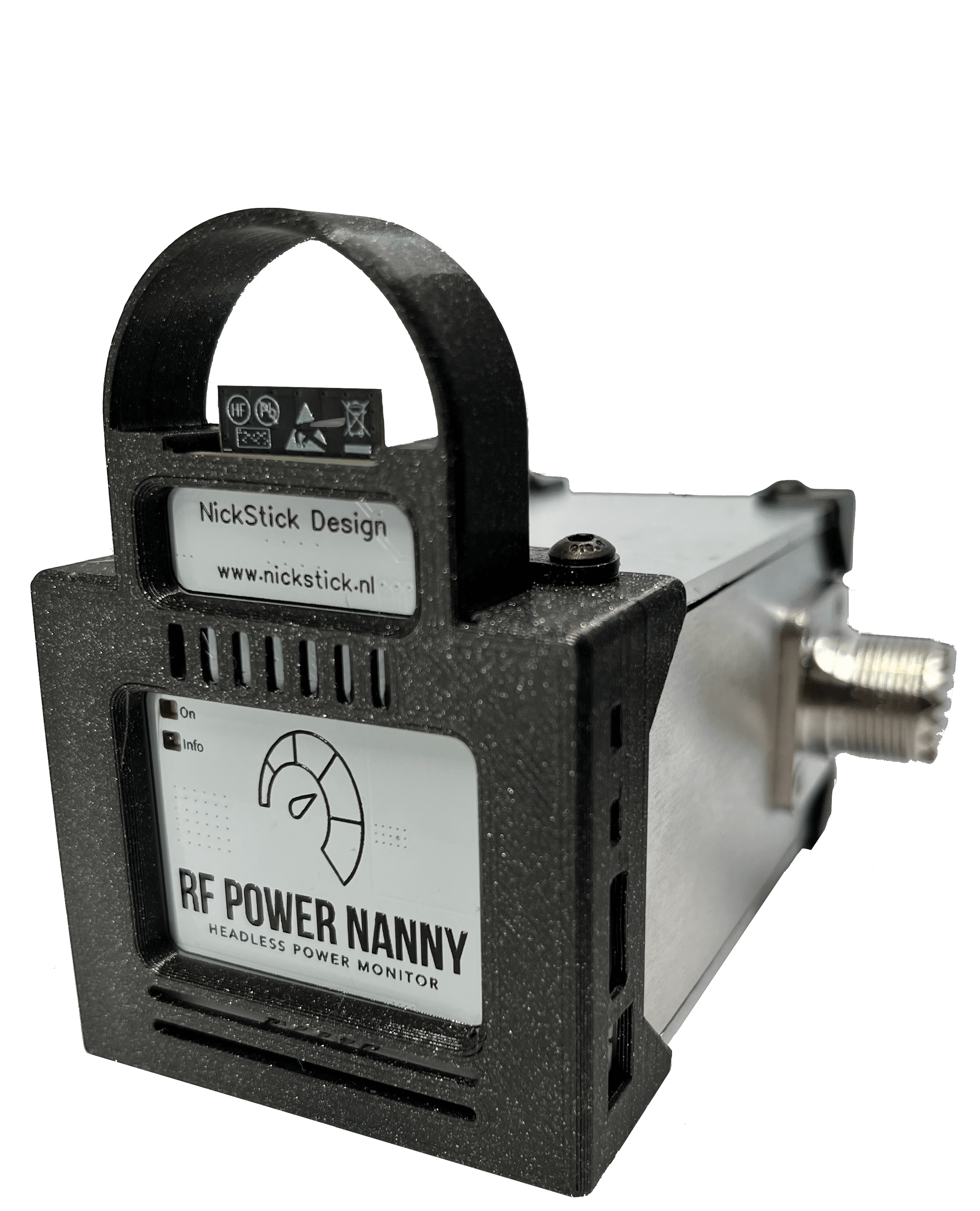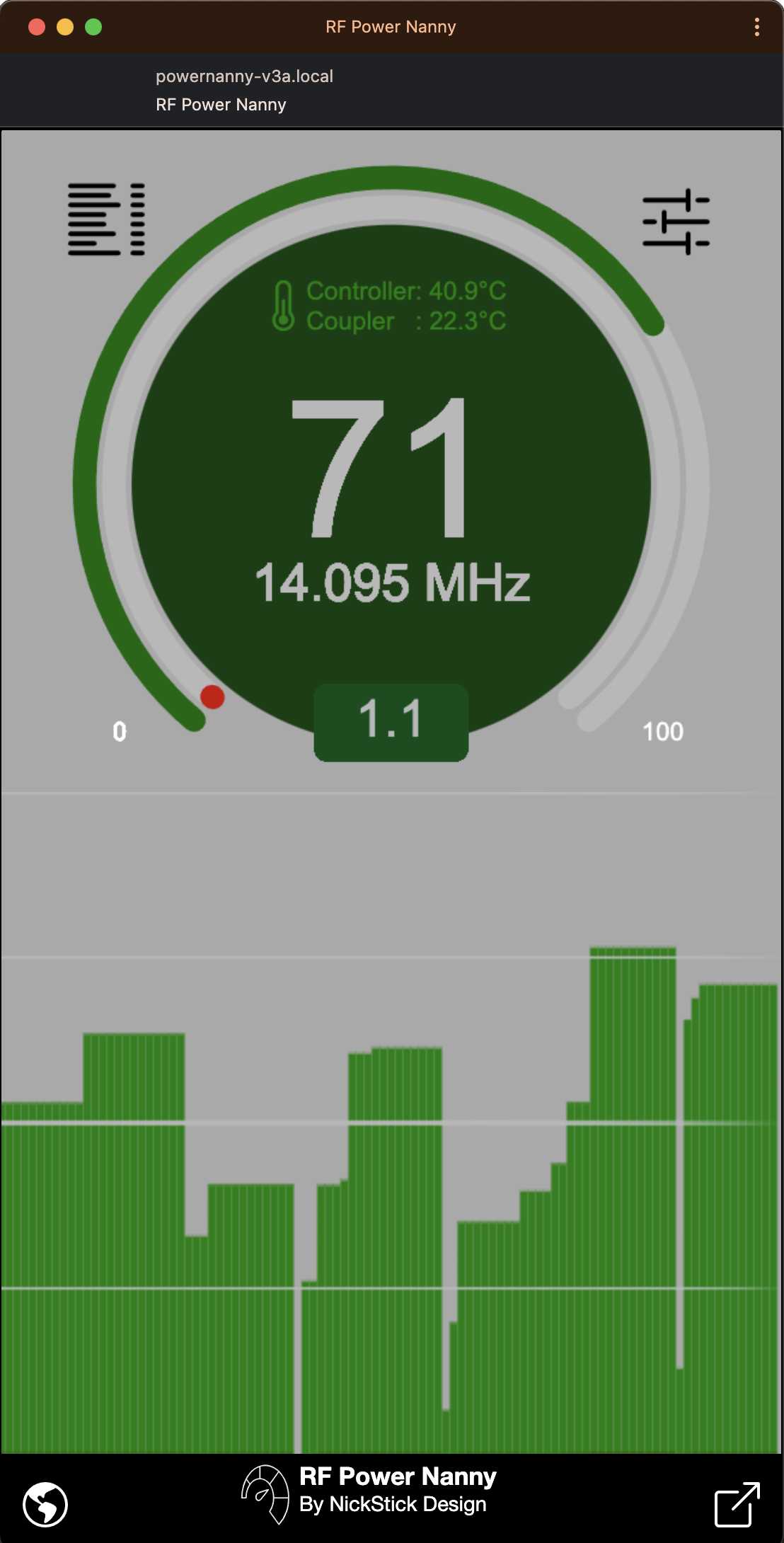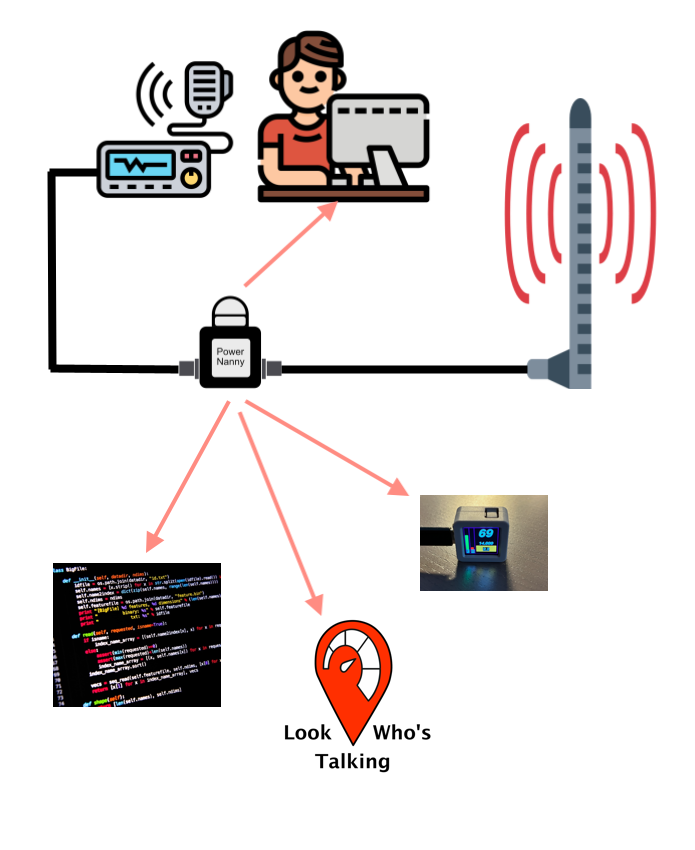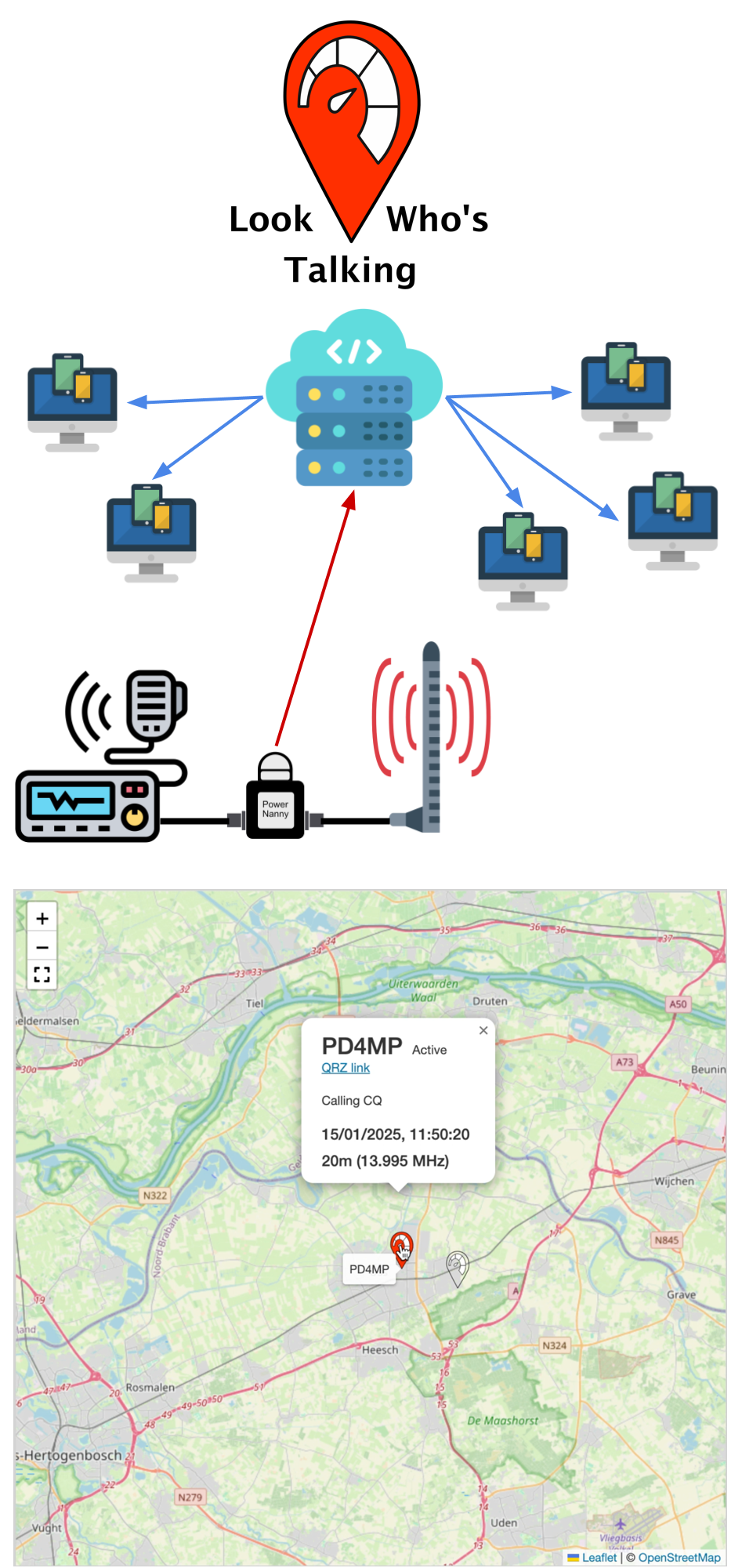Your Smart Companion for HF Radio Monitoring
This compact pass-through device slots seamlessly between your transceiver and antenna (or dummy load), giving you real-time insights into your signal’s performance. The data is streamed wirelessly, so you can monitor your rig’s performance from anywhere in your shack—or beyond.

RF Power Nanny
Operating in the 1-30 MHz range, the RF Power Nanny measures forward and reflected power, calculates SWR, and even includes a built-in frequency counter to track the frequency of your transmissions. The RF Power Nanny isn’t just another gadget; it’s a carefully crafted tool designed with HAMs in mind. The RF coupler is housed in a fully shielded enclosure, ensuring no interference between the sensitive RF circuitry and the WiFi components.

WebApp: Your Window into RF Performance
Accessing the RF Power Nanny is a breeze. Fire up any browser on your desktop, phone, or tablet, and you’re good to go. No downloads, no installations—just a sleek Progressive Web App (PWA) served directly from the device. The intuitive GUI features a dynamic dial indicator, with green for forward power and red for reflected power, alongside numerical displays for power, frequency, and SWR. For those who love data, the real-time graph plots power levels over time, giving you a clear picture of your signal’s behavior.

Connected: Local, Web and devices
Whether you’re fine-tuning your antenna, chasing DX, or just geeking out over RF metrics, the RF Power Nanny is the tool you didn’t know you needed—until now. It’s not just a power monitor; it’s your gateway to smarter, more connected operating. You can use the Web App (PWA), external devices (like an M5Stack display) or your own software with our API

Share the Airwaves: “Look Who’s Talking”
Here’s where it gets exciting. The RF Power Nanny isn’t just about monitoring—it’s about connecting. With the free and optional transmit activity sharing feature, you can broadcast your location, frequency, and callsign (with your permission, of course) to a public server. Other operators can then use the “Look Who’s Talking” web app to see your activity in real-time. Imagine this: a global map dotted with geo pins, each representing a HAM operator actively transmitting. The pin color indicates how recently they were on the air, and a quick click reveals details like frequency, band, callsign, and even a custom message. It’s like a DX cluster meets a real-time activity map, perfect for spotting openings or finding someone to chat with.
Reviews

Web Enabled HF Power Meter
YouTube video from the Tech Minds channel
In this video we take a look at a rather cool project coming from a Dutch ham in the Netherlands. This is the RF Power Nanny, an HF RF Power Meter that provides a real time web page for displaying RF power, Reflected Power and SWR.

RF Power Nanny im Test – lohnt sich das Gerät für Funkamateure?
Der AFU Channel, YouTube Kanal mit dem Schwerpunktthema Amateurfunk von Michael, DL2YMR
RF Power Nanny im Test – lohnt sich das Gerät für Funkamateure? In diesem Video stelle ich dir die RF Power Nanny von NickStick Design vor.

What if you could? -- Ham Nuggets Season 6 Episode 24
YouTube video from the Temporarily Offline channel
Today we’re going to take a look at the RF Power Nanny. Note: This was a first unpacking impression. Later on Steve will do a review after getting to know the Power Nanny a bit better.
Benefits
No clutter, no fuss
Headless design means it stays out of your way while delivering critical data.Real-time monitoring
Dial indicators and graphs keep you informed at a glance.Community connection
Share your transmit activity and discover others on the air.Built for HAMs
Fully shielded, interference-free, and designed with RF enthusiasts in mind. Similar devices often have a noisy LCD display and/or bad shielding.Connectivity
You can use the Web App (PWA), external devices (like an M5Stack display) or your own software with our API.Features
- USB-C for connectivity and power
- Separate dedicated power connection
- Fully shielded Directional Coupler
- Integrated frequency counter
- Powerful Xtensa® 32-bit LX7 microprocessor
- Multiple Power Nannies side-by-side can monitor separate antenna systems
- Upgradable firmware (OTA)
- Versatile Web App (PWA) for mobile and desktop
- Client application served directly from the device
- Simple to use API for easy integration
- Free (optional) activity sharing using the -Look Who's Talking- Cloud service
FAQs
No, currently we only support connectivity over WiFi (and using ESP-NOW). That means you will need good WiFi coverage in places where you want to stream measurement data over a local area network. Outside in the field you have the option to use the RF Power Nanny in Accss Point Mode. The Power Nanny will then act as an Access Point which your phone, tablet or laptop can connect to directly. External devices like an M5Stack display connect to a Power Nanny wireless without the need of a WiFi Access Point (they use a separate communication protocol called ESP-NOW).
The WiFi controller board is completely separated from the directional coupler. The coupler is housed inside a shielded enclosure whereas the WiFi radio is located on the outside of this enclosure. RF Power Nanny was tested extensively by several ham radio operators, no interference issues were reported. Using the USB-C connector to power the device can cause interference in some cases. We advice to use the separate power connector with a “clean” (linear) power supply.
